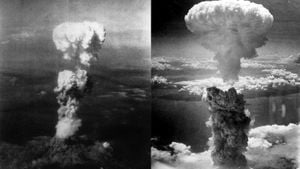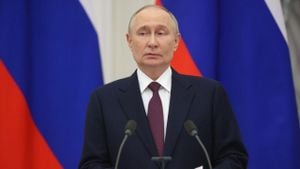The Middle East is caught in the whirlwind of geopolitical tensions and strategic maneuvering, particularly spotlighting the animosity between the U.S. and Iran. Recent events reveal the intricacies of this relationship, particularly following the October 7 attacks by Hamas militants on Israel, which have escalated hostilities and influenced U.S. military operations in the region.
At the recent summit meeting between U.S. President Joe Biden and Israeli Prime Minister Benjamin Netanyahu, discussions revolved around Iran's growing influence and the recent aggressions by Hamas. Herzog, the Israeli President, didn't hold back, labeling Iran as the 'evil empire.' This characterization isn't just rhetoric; it reflects Israel's strategy and America's commitment to curbing Iranian aspirations within the region. The U.S. aims to counter Iran’s alliances with proxy forces across the Middle East, particularly after Iran-backed militias have been linked to attacks on U.S. forces stationed there.
On the military front, the U.S. has responded decisively. Following drone and rocket strikes against American troops at Mission Support Site Green Village, the Pentagon authorized strikes against nine Iranian-backed militia positions within Syria. This action signals America's zero tolerance for attacks on its forces and aims to incapacitate the militias' operational capabilities. According to Major General Pat Ryder, the Pentagon's spokesperson, these strikes are intended to “degrade the Iranian-backed group’s ability to plan and launch future attacks.”
Iran’s involvement isn't purely defensive; rather, it follows its strategic intent to expand its influence through proxy engagements. The aftermath of the October 7 incident has catalyzed Iran's support for groups active against Israeli and American interests, citing the need to respond to perceived injustices faced by Palestinians.
Before the recent escalation, channeling diplomatic relations seemed plausible. There had been whispers of potential negotiations aimed at easing sanctions on Iran, especially as the Biden administration faced political hurdles surrounding the U.S.-Iran nuclear deal. Mohammad Ali Shabani, an expert on Iranian affairs, noted how the October 7 attack complicated the chances of moving forward with diplomatic engagements, making it much harder for any side to treat the conflict with the common objective of peace talks.
Now, as tensions rise and military actions loom large, the question remains—what do future U.S. policies under the newly elected Trump administration look like? If Trump's campaign rhetoric is anything to go by, expect his approach to veer sharply back to the 'maximum pressure' campaign initiated during his first presidency. This involves strict sanctions against Iran and unwavering support for Israel, which motivates Trump's base. The stakes are higher now, with Iran increasing its military assertions in the region and its alliances with groups like Hamas and Hezbollah intensifying fears of wider conflicts.
Trump’s assertive posture promises to shift the dynamics of U.S.-Iran relations once again. His potential return to power signals fewer diplomatic overtures and more overt military preparations. He has already criticized the Biden administration’s approach, blaming it for perceived increases in regional instability. His past withdrawal from the Iran nuclear deal and subsequent sanctions weakened Iran's economy and sparked dissent within its borders, reflected by rising protests over economic conditions.
Accompanying these tensions is the significance of U.S. military presence. With about 900 U.S. personnel stationed in Syria, the forces are primarily engaged against ISIS remnants, but the geopolitical tension with Iran places them at risk from Iranian proxies aligned with Hamas. The October 7 incident triggered new hostilities, prompting Iranian-backed forces to initiate drone and missile strikes at American installations, forcing the U.S. to remain vigilant and responsive.
Consequently, the Biden administration's recent military actions manifest the urgent requirement to stabilize conditions amid rising Iranian assertiveness. General Michael Erik Kurilla, commander of the U.S. Central Command, declared it imperative for the region to maintain U.S. deterrence, signaling to both Iranian forces and their proxies the untenability of assaults on U.S. troops.
This interaction between military measures and political statements offers insight not only to U.S.-Iran dynamics but also to how other regional players might respond. Countries like Saudi Arabia and the UAE remain alert to U.S. maneuvers, knowing they impact their own security trajectories. The Abraham Accords, touted as groundbreaking, are also under the shadow of these geopolitical strains. Israel's deepening relationships with Arab neighbors are being tested as they have to position themselves against not only Iranian influence but also the aftermath of conflicts like the one involving Hamas.
The stark realities of the Middle Eastern geopolitical terrain are evidently complex and filled with factions. Amid bitter narratives of vengeance and retaliation, the global community watches closely, aware of the consequences of such tensions extending far beyond regional borders.
It is clear as tensions continue to rise, the U.S. is committed to establishing military preeminence to support its allies but faces the challenge of addressing domestic viewpoints on interventionism and foreign military entanglements. Only time will tell how these dynamics will shape the future of U.S. foreign policy and the stability of the Middle East.



